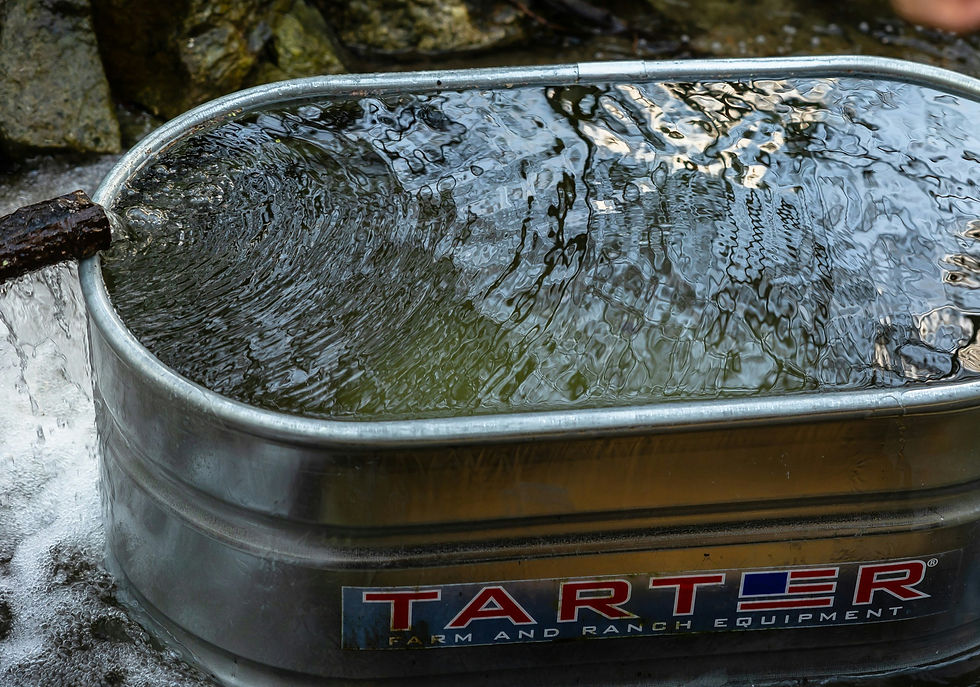Hot to Cold: Why Contrast Therapy Works
- Harrison Armitage

- Aug 18
- 4 min read
Having experienced it a few times down at the coast, and then seeing it all around Copenhagen, I had to write up about it. I love it, there’s something strangely better about hopping from a hot sauna straight into a freezing cold plunge as opposed to just one on it’s own.
This practice, known as contrast therapy, is getting more and more attention for its recovery and health benefits. But what does the science actually say, and is it worthwhile for Amateur Athletes?

What Is Contrast Therapy?
Contrast therapy involves alternating between heat exposure (like a sauna, steam room, or hot bath) and cold exposure (ice baths, cold plunges, cryotherapy, or even cold showers). Typically, a session woulds last anywhere from 15 to 30 minutes, with cycles of 1-15 minutes in each temperature before switching.
The idea is simple: by forcing your body to adapt to dramatic shifts in temperature, you stimulate your cardiovascular, muscular, and nervous systems in ways that may aid recovery, resilience, and even long-term health.
The Physiology: Why Hot to Cold Works
When you expose yourself to heat, blood vessels dilate (widen), increasing circulation and heart rate while encouraging relaxation of muscles (Bieuzen et al., 2013). Step into the cold, and those vessels constrict, blood flow is redirected to protect your core, and your sympathetic “fight-or-flight” system is activated (Hanna et al., 2019).
This vascular pumping effect (vessels opening in the heat and narrowing in the cold) is thought to accelerate the removal of metabolic waste products like lactate and improve nutrient and oxygen delivery to recovering muscles (Higgins et al., 2017). The rapid switching between hot and cold may amplify these effects compared to either alone.
Recovery and Performance: What the Evidence Shows
Research on contrast therapy consistently shows reductions in muscle soreness and perceived fatigue when used after intense exercise, particularly in team sports and endurance training (Leeder et al., 2012; Higgins et al., 2017). Athletes who used contrast therapy reported feeling fresher, with less delayed onset muscle soreness (DOMS) up to 72 hours after competition.
However, the picture is more nuanced when it comes to performance outcomes. Some studies found no direct improvements in strength or power performance, meaning contrast therapy doesn’t necessarily make you stronger or faster but it is likely to help you train or compete again at a higher capacity by reducing fatigue and soreness (Bieuzen et al., 2013).
So, for Amateur Athletes balancing jobs, training, and all that life entails, any added ability to recover quicker will mean more consistent training without feeling like your body is permanently stuck in “day two DOMS”.
Long-Term Health Benefits
Contrast therapy may also offer systemic health benefits beyond muscle recovery.
Heart health: Regular sauna use has been linked to lower cardiovascular disease risk and reduced all-cause mortality (Laukkanen et al., 2018).
Mental wellbeing: Heat exposure is associated with lower risk of depression (Laukkanen et al., 2019), while cold immersion has been tied to mood improvement and reduced anxiety (van Tulleken et al., 2018).
Autonomic balance: Cold exposure activates the sympathetic nervous system, while heat supports parasympathetic activity. Alternating between the two may help train your nervous system to be more adaptable to stress (Hanna et al., 2019).
This might explain why many regular sauna-and-plunge users describe a mental clarity, “reset,” or even euphoria after sessions.

Practical Application
So, how should you use contrast therapy, and is it even feasible?
Timing: Best used post-training or post-competition to aid recovery, though it is just as useful on rest days for relaxation.
Ratios: A common protocol is 5-10 minutes heat into 1-3 minutes cold, repeated for 3-4 cycles, finishing with cold.
Accessibility: No sauna? A hot shower or bath combined with a cold shower/plunge/bath can provide similar effects; it’s about the contrast, doesn’t have to be luxurious.
Consistency: Benefits appear to be cumulative; incorporating contrast therapy 2–4 times per week may give you more reliable results (Higgins et al., 2017).
Feasibility:
You may not have a bath or a cold plunge - as outlined above, contrasting shower temperatures can be just as effective.
Gyms also increasingly have saunas, and if they don’t have a cold plunge, get in a cold shower for a few minutes in between.
Coastal saunas are a great bet but can be expensive; I’ve found they’re anywhere between £15 and £25 for an hour’s session, but they do make it easy to go from sauna to sea.
The Bottom Line
Contrast therapy won’t replace sleep, balanced training, or good nutrition but the science suggests it can:
Reduce muscle soreness and perceived fatigue
Support circulation and cardiovascular health
Boost mental wellbeing and stress resilience
So the next time you’ve come out of a sauna and you’re debating getting into a cold plunge or questioning whether that shower should be turned to cold, remember you’re not just testing your grit. You’re giving your body a proven tool for recovery.
References
Bieuzen, F., Bleakley, C. M., & Costello, J. T. (2013). Contrast water therapy and exercise induced muscle damage: A systematic review and meta-analysis. PLoS ONE, 8(4), e62356. https://doi.org/10.1371/journal.pone.0062356
Hanna, G. P., Smith, R., & Chauhan, V. (2019). Cold exposure and vascular health: A systematic review. Sports Medicine, 49(2), 193–204. https://doi.org/10.1007/s40279-018-1010-6
Higgins, T. R., Greene, D. A., & Baker, M. K. (2017). Effects of cold water immersion and contrast water therapy for recovery from team sport: A systematic review and meta-analysis. Journal of Strength and Conditioning Research, 31(5), 1443–1460. https://doi.org/10.1519/JSC.0000000000001559
Laukkanen, T., Laukkanen, J. A., & Kunutsor, S. K. (2018). Cardiovascular and other health benefits of sauna bathing: A review of the evidence. Mayo Clinic Proceedings, 93(8), 1111–1121. https://doi.org/10.1016/j.mayocp.2018.04.008
Laukkanen, T., Kunutsor, S. K., & Kauhanen, J. (2019). Sauna bathing is inversely associated with dementia and Alzheimer’s disease in middle-aged Finnish men. Age and Ageing, 46(2), 245–249. https://doi.org/10.1093/ageing/afw212
-3.png)










Comments